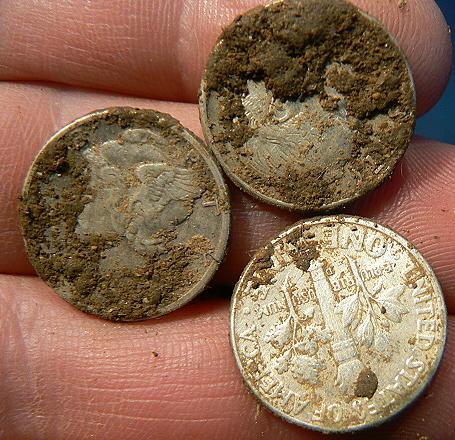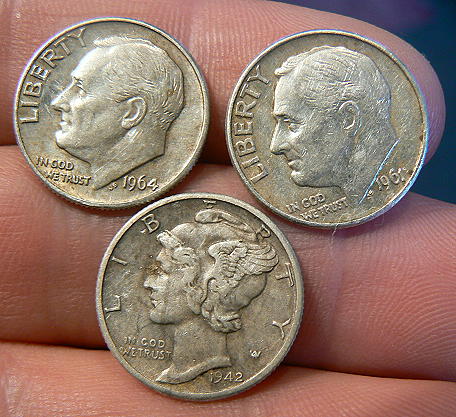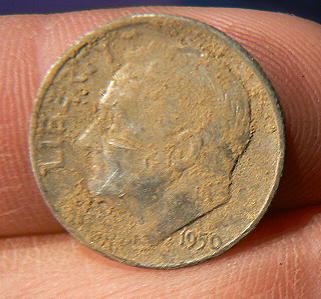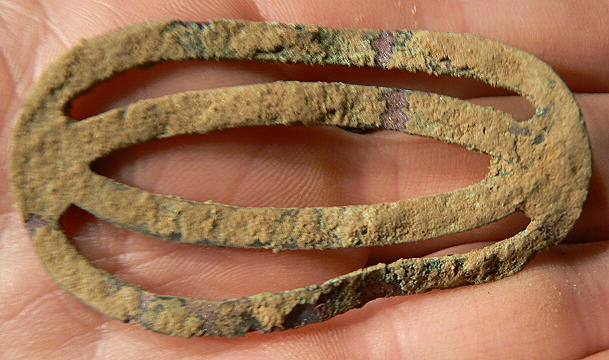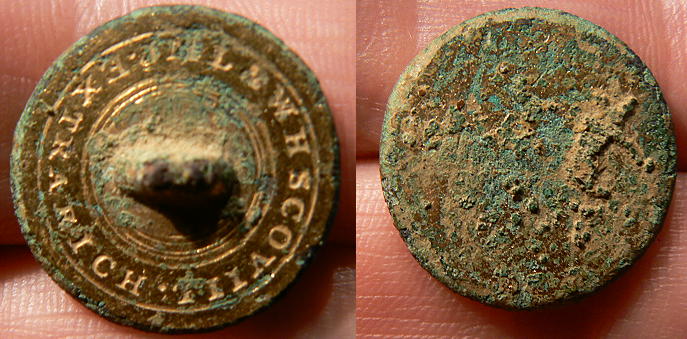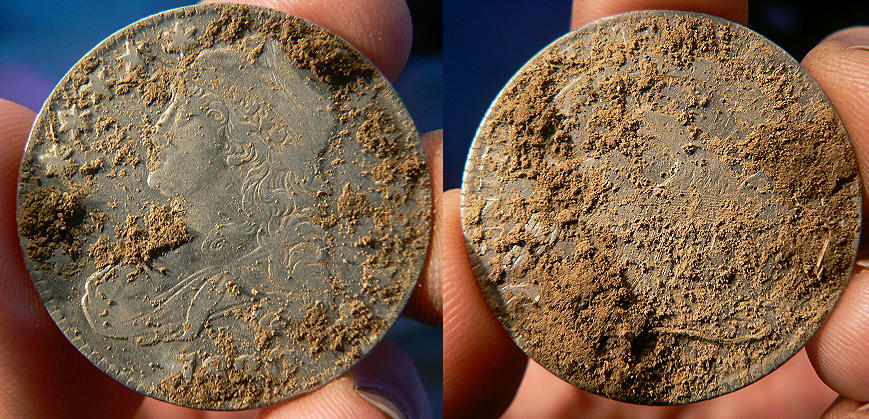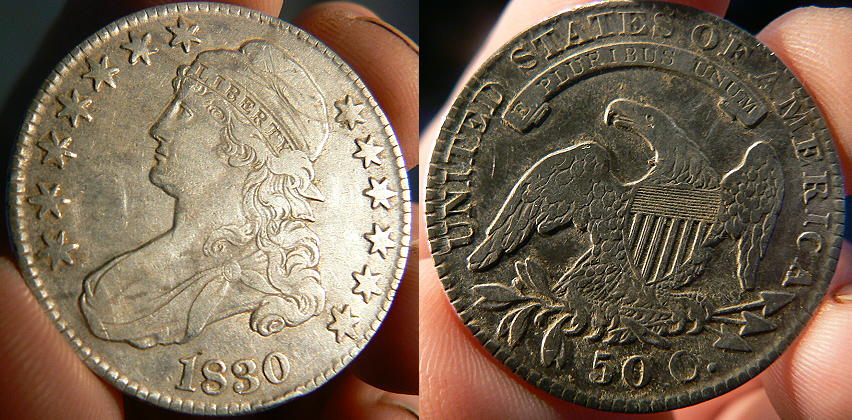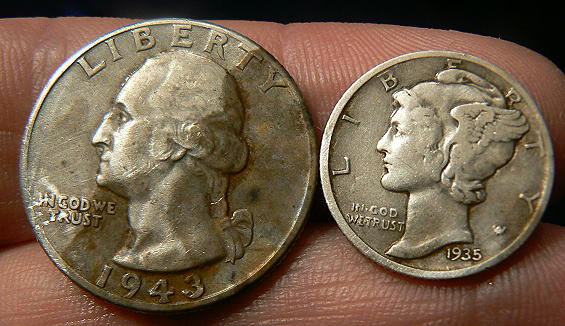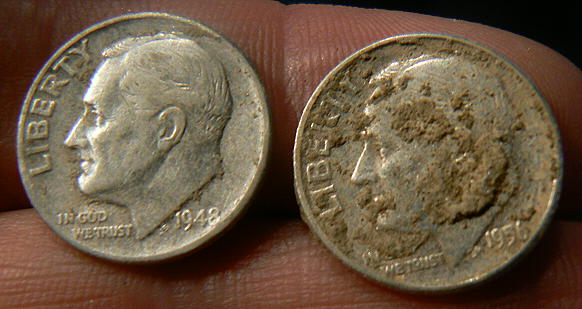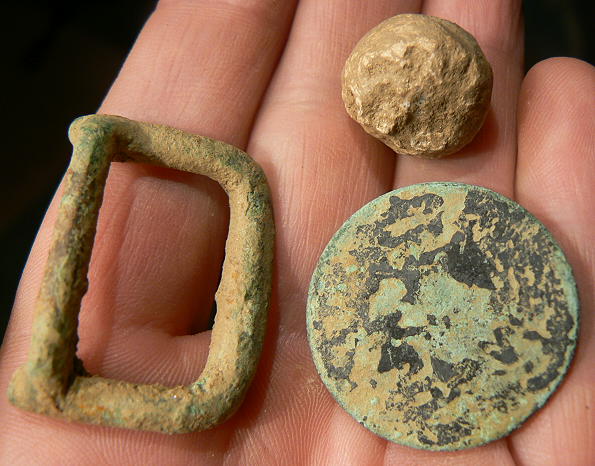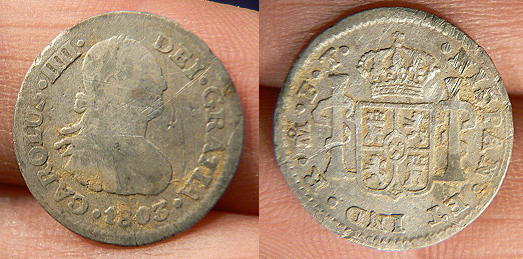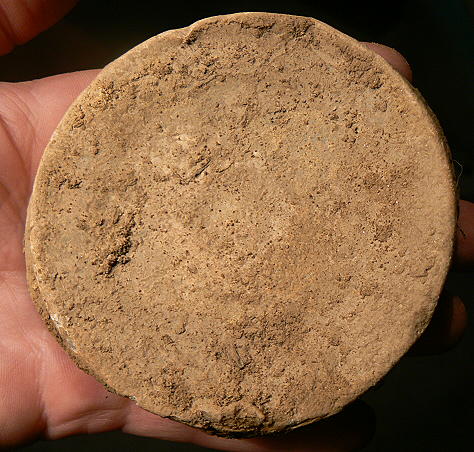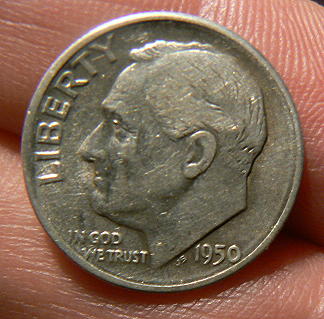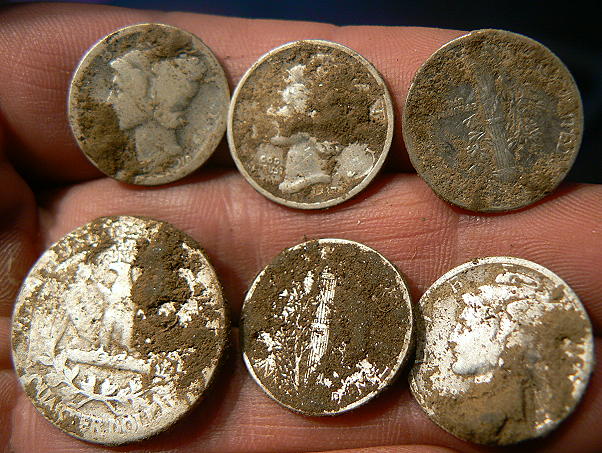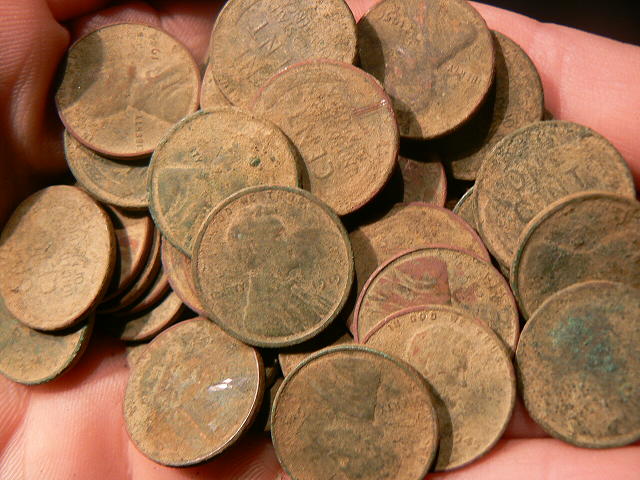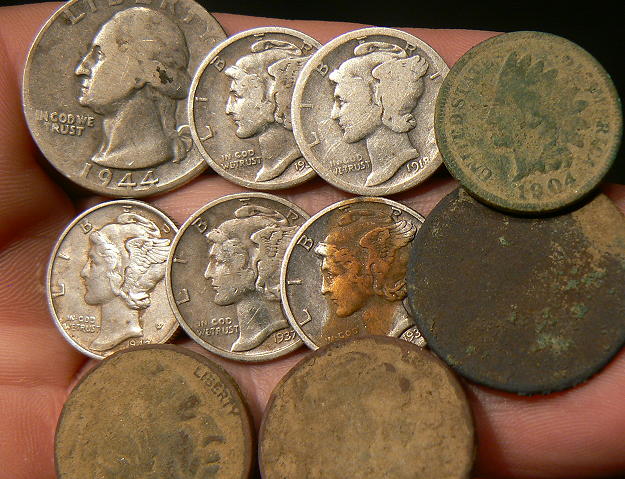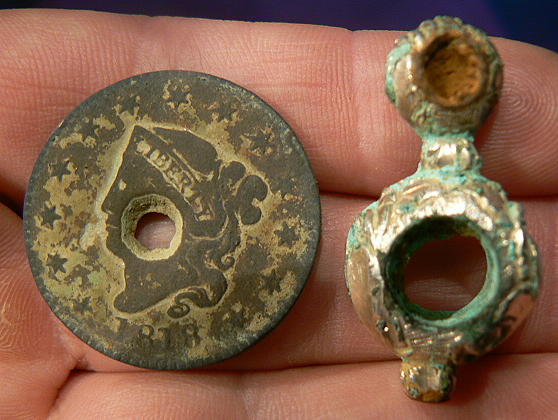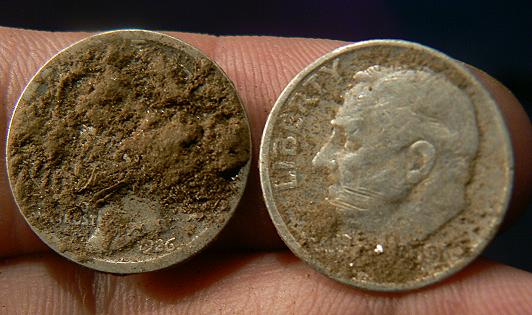I didn’t find any silver today. I found 2 hours of light rain, 36 degrees, and misery in the field that produced the bust half. Yesterday was 5 hours in the same field, where it was colder and windier. At least it was sunny, more or less. And, at least I found a 1919 wheatie. Whohoo. Wheaties are hard to find (at least at this place, nearly as hard as bust silver), so we’ll take ’em.
Anyway, I was discussing the concept of the random field theory on one of my Facebook groups when I posted the bust half, which basically says: if you walk into a random field, and throw enough time at the problem, eventually you will get an old silver (at least around here). We all know its true, cause if you hunt a park from the 50s, and are digging reales and coppers, it has to be true, assuming the thing was a field before it was a park, and the dirt isn’t imported fill. Pretty safe assumptions with just the tiniest bit of research.
So, I’ve found 9 reales, 8 of which were either directly from fields, or from parks on land that used to be fields (the 9th from a colonial era house property). Same with my 2 bust silvers and, I’ll bet, most of my coppers, (tho I didn’t bother to go thru them and check).
Being a numbers guy, I was curious to quantify the random field theory, at least for this field, for future reference. I suppose if I do another field site, I’ll refer back to these numbers, so I might as well bore myself with them now, while they are fresh in my mind, since I don’t otherwise track this stuff (in particular, I don’t track the time I spend detecting, just the finds and the sites).
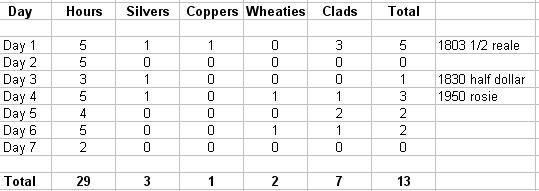
Well, that takes alot of patience, doesn’t it? 1 silver per 10 hours; 2 older coins per 10 hours. But. at least the silvers were worth it. For reference, I think a reasonable run rate is 1 silver per hour at a normal site, a “honeyhole” 2 or more per hour, worst case 1 per 2 hours (which is were we’ve been more often that not this season).
Interesting that I didn’t find a single nickel or IH in this field. And, unlike park hunting, I dug just about every repeatable tone, regardless of where it was on the range.
For relics, I found 2 buttons (one copper flat, one Waterbury), 2 colonial buckles, the copper hair thing, and a musket ball.
For reference, I estimate that the field was about 7.15 acres. I used Google Earth and this website to estimate. (I’m surprised I could not find a way to do that directly in GE; I’m sure its there, but this is close enough).
So, on average, it takes me about 4 hours to cover an acre in a sparse field. (I’m sure all this data is just fascinating. Its all for my own future reference in case I decide to do another field project, which I’m sure I will someday).
So that’s that. I usually don’t have this sort of patience, but it worked out for this field, IMHO. given that half dollar. (I’ve done this sort of thing before, and the results, tho I never took down the data, seemed to be about the same, without, of course, the big fish, but more abused coppers).
As for the site, there are several other fields there, but my permission is suspended on Monday, the start of rifle season. After the hunters are gone, not sure if I will go back, or not. After finding the bust half, you want to clear the entire site, but the data show, as they always do, that painful regression to the mean.
But, there’s more. Don’t get me started on stats. I love ’em to death, and am always looking for the cause. That’s why economists become economists.
There’s the issue of the dead zone. I haven’t found a single silver coin dated after 1857 and before 1892. That’s what I call the dead zone. Why not? I’ve found 16 silver coins dated 1857 and earlier (9 Spanish, 4 seated, and 1 trime). What’s going on here? I really expected one in that field.
What happened in 1857 that could explain this? I dunno, but I do know that large coppers went away, Spanish silvers were decreed non-current, and we went to smaller, lower tone cents that year, and nickels (also lower tone), in 1866 or so. By 1891 (the end of the seated era), industrialization and urbanization were the buzzwords of historical economics.
And, while I am not a historical economist, I’m unaware of any long term economic event (such as the Great Depression, which explains why coins of that era are harder than expected to find), that would explain the dead zone.
Is it technical (VDI of pocket change changing), is it economic, is it chance, or is it some other socioeconomic factor such as farm labor migrating from the owner and family (who may have had change), to laborers, who may not have (simply working for room and board)?
Who knows? Maybe a combination of all these things. But, I sure would like to start scoring some dead zone era silvers as well (not that I’m complaining — its more a case of: if you see statistics trending a certain way in any domain, and can ferret out the underling cause (and remember, correlation is not causation — not understanding that tends to lead to irrational superstition), you can generally perform better in that domain. That’s what we try to do here, FWIW. In any case, my guess is that you have to hit urban sites, and that is hard, at least around here.
Well, I’m sure that foray into statistical metal detecting was interesting 🙂 I don’t care. I’m still jacked about that bust half. Anyway, I think I’ll be glad I recorded these stats somewhere down the line. We’ll see.

